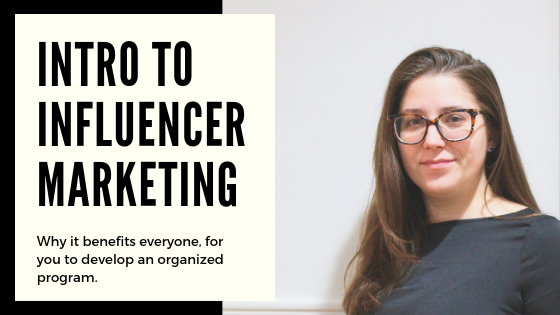Intro to Influencer Marketing Programs

It’s better for you, and everyone else involved, if you don’t wing it with your influencer marketing programs.
In this series of articles, we’re going to take a look at how and why you should plan your influencer marketing program, to get it right from the very start. These programs can be very powerful and lucrative for both the brand and its influencers, if they’re done right. After all, that’s why everyone is moving in this direction. Who doesn’t want trusted personal endorsements of their products and services over paid ads and advertorials?
I’m not sure if it’s the excitement over starting an influencer program, or the myriad of different advice on what works out there, but we’re rushing into these things. As a result, there’s no momentum built, and too few sales for the amount of time, effort, and money invested.
Build your influencer program from the ground up, just like you built your brand. Taking it one step at a time, developing a key action plan, and creating a framework to collect and measure data, will give you better results hand over fist.
This post will share some of the information and lessons that I’ve learned working with influencers and building successful programs. I’ll share examples of times when things weren’t working so well, and how my teams were able to fix them. I have years of experience both building and running these programs, but also in participating in other people’s programs. So I have keen insights into these powerful marketing engines and how they run.
Building Successful Influencer Marketing Programs
Congratulations! You’ve selected a complex but effective way to gain marketshare and become top of mind with your potential customers. Roll up your sleeves. It’s going to take some work to get started, but together we’ll build the foundation for a solid, successful program.
There are different types of programs out there and different types of brands find success with different programs. Sound complicated? It is and it isn’t. The first step is taking a bit of time to do some research and learn what other people are doing.
I break these different programs into three categories. Let’s agree to recognize that each of these different categories has a variety of programs within it, but they serve as a good starting point.
1. Everyone is Welcome!
2. Handshake Programs
3. For the Pros
Program Descriptions:
Everyone is Welcome Influencer Marketing Programs
Ideally these are brands with low cost products (cost to actually produce the product rather than retail price). Think of Sand Cloud or Boho Seventy. These influencer programs welcome almost everyone, and give their products away at a discounted rate.
Often there is some kind of influencer code like with SandCloud to track their actual influence and incentivize the individual to share the brand more.
However, there are others who use these programs as more of a mind game like Boho Seventy, where they only ask that you take photos of the clothing and post them to your social media channel. There’s no tracking of individual sales through an incentivize.
There’s low risk with these programs because the company still is able to cover the cost of their product even with the influencer discount. They also work for gaining market share. But as far as the impact of individual influencers, the reach is pretty small. You’re reaching a far greater number of smaller groups of influence.
Handshake Influencer marketing Programs
This is the bulk of influencer programs. Often these brands will offer free product to influencers in a certain industry. Successful brands will set certain requirements like number of followers, number of posts in exchange for product, etc. Additionally these brands will offer discount or unique codes to track the sales inspired by each influencer. Some offer monetized incentives or additional free product. Examples of these companies are Gurus, Simply Earth, and BeaGen.
These programs have the potential to be very successful but they require a lot of hands on management. Clearly defining what you require for a person to qualify as an influencer, and what is expected of them once they become an influencer is crucial. Here there is risk to lose influencers to other brands, or worse, your direct competitors.
Influencer Marketing Programs For the Pros
These are the more elite programs where influencers are generally working this as their full time job, or making a significant income from their brand partnerships. Think of the yoga instructors repping clothing from high end brands, or the lifestyle bloggers who endorse big name brands.
Often with these programs there is a more sophisticated partnership agreement where influencers are legally compelled to only represent a single brand per product category and there is generally either money or significant free product exchanged.
These partnerships are changing the marketing industry and actually inspiring new legislation for this previously untaxed revenue source. They’re being watched very closely by people like myself to see what comes next for this entire segment of the marketing industry.


